For Royal Borough of Windsor & Maidenhead
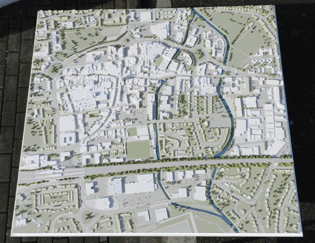
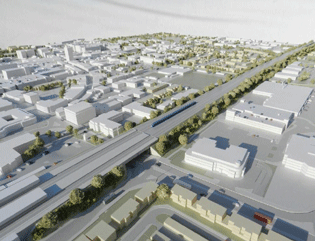
1:750 scale is ideal for a masterplan model because it allows you to represent a large area, such as a town centre, on a reasonably compact base but at the same time the buildings are large enough to appreciate storey heights and general massing. This particular example is approximately 1.8m square and includes over 20 removable panels for the redevelopment zones. This allows interchanging of different options so that each development proposal can be viewed and assessed within the overall 3D context. The clients were delighted with the finished model and indeed, one of the councillors wrote to us personally to say “I would like to once again thank you and all your colleagues for doing such a great job.”
Two more industrial models – Sub-sea control module & Ukube Satellite.
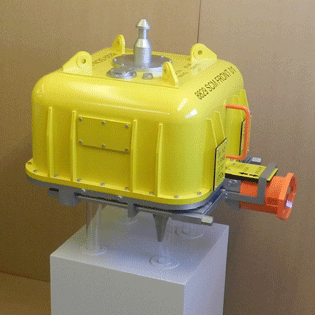
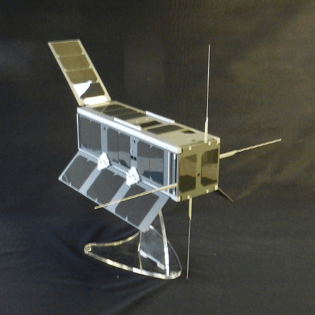
Not all the models we make are scaled down to a smaller size. These two industrial models are both life-size replicas of the real thing. The subsea control module is about 900mm square and was commissioned because the client wanted a lightweight version of the product to take to exhibition venues. The real unit was extremely heavy and difficult to transport whereas our lookalike version, made from thin plastics, could be easily lifted by two men. The Ukube satellite model, made for the UK Space agency, was unusual in that the original satellite was only about 350mm long so there was no need to scale it down. We’ve actually made four of these satellite models with possibly more to follow. They’re used for educational presentations and were made with working hinges so that the solar panels and antennae could be deployed in the same way as the real thing.
Two industrial models for completely different industries
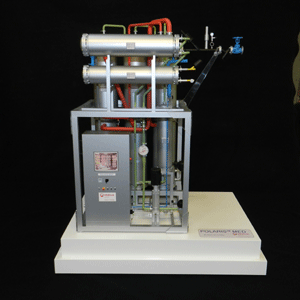
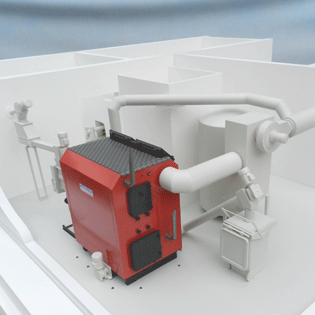
It’s been a particularly busy start to the new year and amongst the smaller projects we’ve completed recently are these two industrial models, one for a Biogas boiler (at 1:15 scale) and one for a water purification system (at 1:8 scale). Both models were for use at trade shows/exhibitions in UK and abroad and were supplied with purpose-built flight cases. The Water purification model was one of a pair and actually had removable sections to show the interior workings but for confidentiality reasons we are unable to show these views. The Biogas boiler model featured white LED uplighters to highlight it within the general plant room context. Unfortunately it was only after the model had gone that we realised we didn’t have any photos with the lights on!
Two unusual projects to brighten up February
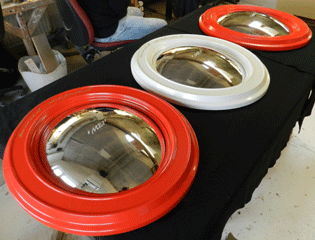
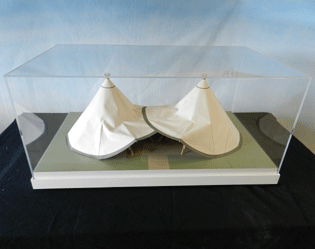
As well as our run of the mill (if you can call them that) projects, we often get asked to make unusual objects such as the oval “magic” mirrors and the twin Tipi model shown above. The mirrors were commissioned by an artist for an installation in Italy and had to feature the famous “Mirror, mirror on the wall…” wording in raised gold script. The Tipi model was produced for an events company who wanted to illustrate the exciting and inspirational space created by the twin tent set up.
Demonstration Model for Utility Oils
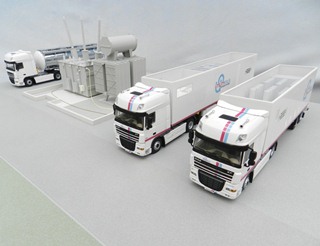

The purpose of this model was to demonstrate this company’s fleet of new, purpose-built trailers supplying mobile oil related services to industry. We were able to buy “off the shelf” DAF tractors and brand them with the company’s livery but the trailers had to be built from scratch to incorporate a simplified representation of the client’s oil processing equipment. The roofs of the trailers look as though they have been left off but they are actually made from clear 0.5mm acrylic to allow views into the interior whilst protecting the internal components. The transformer installation was also made from scratch, at a slightly simplified level.